 W
WAnukulchandra Chakravarty, popularly known as Sree Sree Thakur, was a spiritual leader and the founder of Satsang, in Deoghar.
 W
WMahāvatār Bābājī is the name given to an Indian yogi by Yogiraj Lahiri Mahasaya, and several of his disciples, who reported meeting him between 1861 and 1935. Some of these meetings were described by Paramahansa Yogananda in his 1946 book Autobiography of a Yogi, including a report of Yogananda's own meeting with the yogi. Another account was given by Sri Yukteswar Giri in his 1894 book The Holy Science. According to Sri M's autobiography, Babaji was Lord Shiva. In the second last chapter of his book, he mentions Babaji changing his form to that of Lord Shiva. All of these accounts, along with additional reported meetings, are described in various biographies. According to Yogananda's autobiography, Babaji has resided for at least hundreds of years in the remote Himalayan regions of India, seen in person by only a small number of disciples and others.
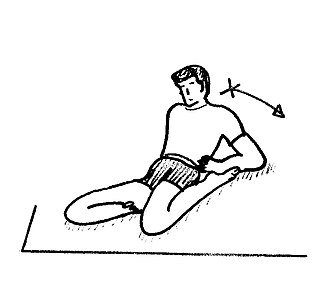 W
WBando yoga or Burmese yoga is a form of yoga from Myanmar usually taught alongside bando. It is probably based on the internal training of Indian martial arts and is often referred to as peasant or slave yoga. It was for the common man and also used by ancient warriors of northern Burma to maintain health and protect from illness and disease. Today it is practiced by ethnic Burmese in parts of Southeast Asia, India.
 W
WBlót is the term for "blood sacrifice" in Norse paganism. A blót could be dedicated to any of the Norse gods, the spirits of the land, and to ancestors. The sacrifice involved aspects of a sacramental meal or feast.
 W
WThe Centre for Christian Meditation and Spirituality is an institution of the Diocese of Limburg, Germany. It is based at the Holy Cross Church in Frankfurt-Bornheim and is dedicated to services, contemplation, meditation, retreats, counseling, and other events such as concerts.
 W
WChakra are various focal points used in a variety of ancient meditation practices, collectively denominated as Tantra, or the esoteric or inner traditions of Hinduism.
 W
WChinmoy Kumar Ghose, better known as Sri Chinmoy (27 August 1931 – 11 October 2007), was an Indian spiritual leader who taught meditation in the West after moving to New York City in 1964. Chinmoy established his first meditation center in Queens, New York, and eventually had 7,000 students in 60 countries. A prolific author, artist, poet, and musician, he also held public events such as concerts and meditations on the theme of inner peace. Chinmoy advocated a spiritual path to God through prayer and meditation. He advocated athleticism including distance running, swimming, and weightlifting. He organized marathons and other races, and was an active runner and, following a knee injury, weightlifter.
 W
WChristian prayer is an important activity in Christianity, and there are several different forms used for this practice.
 W
WBaba Hari Dass, born in Almora near Nainital, Uttar Pradesh, India, was a yoga master, a silent monk, and a commentator of Indian scriptural tradition of Dharma and Moksha. He was classically trained in Ashtanga Yoga – Raja Yoga of Patanjali, as well as Kriya Yoga, Ayurveda, Samkhya, Tantra Yoga, Vedanta, and Sanskrit.
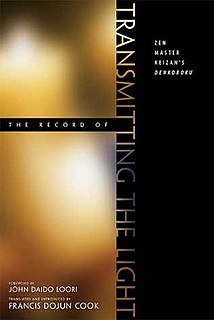 W
WDenkōroku is a kōan collection written in 1300 by Keizan Jokin Zenji, the Great Patriarch of Sōtō Zen Buddhism, based on approximately a year of his Dharma talks.
 W
WDhikr, also spelled Zikr, Thikr, Zekr, or Zikar, literally means "remembrance, reminder" or "mention, utterance". They are Islamic devotional acts, in which phrases or prayers are repeated. It can be counted on a set of prayer beads or through the fingers of the hand. It plays a central role in Sufi Islam. A person who recites the Dhikr is called a ḏākir . Tasbih (تَسْبِيح), literally meaning "glorification" is a form of dhikr that involves the repetitive utterances of short sentences glorifying God. The content of the prayers includes the names of God, or a dua taken from the hadiths or the Quran.
 W
WThe Eleven Naqshbandi principles or the "rules or secrets of the Naqshbandi", known in Persian as the kalimat-i qudsiya, are a system of principles and guidelines used as spiritual exercises, or to encourage certain preferred states of being, in the Naqshbandi Sufi order of Islamic mysticism.
 W
WAn entheogen is a psychoactive substance that induces alterations in perception, mood, consciousness, cognition, or behavior for the purposes of engendering spiritual development in sacred contexts. Anthropological study has established that entheogens are used for religious, magical, shamanic, or spiritual purposes in many parts of the world. Entheogens have traditionally been used to supplement many diverse practices geared towards achieving transcendence, including divination, meditation, yoga, sensory deprivation, asceticism, prayer, trance, rituals, chanting, hymns like peyote songs, drumming, and ecstatic dance.
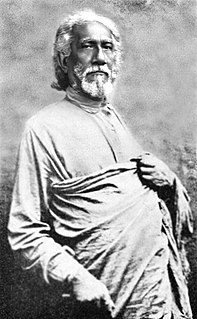 W
WSri Yukteswar Giri is the monastic name of Priya Nath Karar, an Indian monk and yogi, and the guru of Paramahansa Yogananda and Swami Satyananda Giri. Born in Serampore, West Bengal, Sri Yukteswar was a Kriya yogi, a Jyotisha, a scholar of the Bhagavad Gita and the Upanishads, an educator, author, and astronomer. He was a disciple of Lahiri Mahasaya of Varanasi and a member of the Giri branch of the Swami order. As a guru, he had two ashrams, one in Serampore and another in Puri, Odisha, between which he alternated his residence throughout the year as he trained disciples.
 W
WIn chaos magic, "gnosis" or "the gnostic state" refers to an altered state of consciousness in which a person's mind is focused on only one point, thought, or goal and all other thoughts are thrust out. The gnostic state is used to bypass the "filter" of the conscious mind – something thought to be necessary for working most forms of magic.
 W
WYogi Gorakhnath was a Hindu yogi, saint and one of the earliest poets of Bhojpuri, who was the influential founder of the Nath Hindu monastic movement in India. He is considered as one of the two notable disciples of Matsyendranath. His followers are found in India at the place known as Garbhagiri which is in Ahmednagar in the state of Maharashtra. These followers are called yogis, Gorakhnathi, Darshani or Kanphata.
 W
WA home altar or family altar is a small shrine kept in the home of a Western Christian family used for Christian prayer and family worship. Home altars often contain a cross or crucifix, in addition to a Bible, a breviary, a daily devotional, icons of Jesus Christ and prayer beads, among other religious articles specific to the individual's Christian denomination, for example, the images of the saints for Catholics, the Anglican Rosary for Anglicans, the Small Catechism for Lutherans.
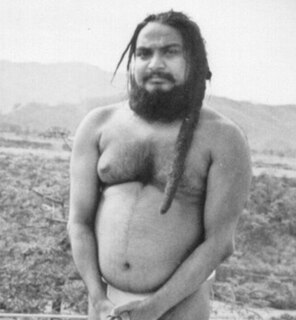 W
WJangama dhyana is a meditation technique which has been practiced by various sages over the centuries. In recent times, this technique was widely taught in India and around the world by Shri Shivabalayogi Maharaj, who experienced a spiritual vision in which the manifestation of a Jangama sage instructed him in this technique of meditation to achieve self-realization. Jangama means 'eternal existence' and dhyana means 'meditation.' Hence Jangama dhyana is 'Meditation on the Eternal Existence .'
 W
WThe Kamalamba Navavarana Kritis by Shri Muthuswami Dikshitar (1776-1836) are some of the most famous pieces of music in the Carnatic system of Indian classical music. They are treasures which embody not only the technical brilliance of the composer but also offer a peep into the advaitic school of Hindu philosophy and elements of Tantric rituals. They are very elaborate compositions which may be well compared with major symphonies in the Western system.
 W
WIn Hinduism, Kundalini is a form of divine feminine energy believed to be located at the base of the spine, in the muladhara. It is an important concept in Śhaiva Tantra, where it is believed to be a force or power associated with the divine feminine or the formless aspect of the Goddess. This energy in the body, when cultivated and awakened through tantric practice, is believed to lead to spiritual liberation. Kuṇḍalinī is associated with Parvati or Adi Parashakti, the supreme being in Shaktism; and with the goddesses Bhairavi and Kubjika. The term, along with practices associated with it, was adopted into Hatha yoga in the 9th century. It has since then been adopted into other forms of Hinduism as well as modern spirituality and New age thought.
 W
WShyama Charan Lahiri, best known as Lahiri Mahasaya, was an Indian yogi, guru and a disciple of the Kriya Yoga master Mahavatar Babaji. In 1861, he was chosen by his guru to revive the yogic science of Kriya Yoga to the public after centuries of its guarding by masters. He was unusual among Indian holy people in that he was a householder: marrying, raising a family, and working as a government accountant, he lived with his family in Varanasi rather than in a temple or monastery. Throughout his life, he spread Kriya naturally and rarely sponsored any organizations; nonetheless, his pious living attracted followers and he became the guru of many advanced Kriya disciples, such as Panchanan Bhattacharya and Swami Sri Yukteswar Giri. For his exceptional lifestyle as an "Ideal yogi-householder", he became a spiritually inspirational figure and achieved a substantial reputation among 19th century Hindu religionists.
 W
WAnandamayi Ma was a Bengali Saint, described by Sivananda Saraswati as "the most perfect flower the Indian soil has produced." Precognition, faith healing and miracles were attributed to her by her followers. Paramahansa Yogananda translates the Sanskrit epithet Anandamayi as "Joy-permeated" in English. This name was given to her by her devotees in the 1920s to describe her perpetual state of divine joy.
 W
WShri Krishna Chaitanya Mahaprabhu was a 15th century Indian saint and founder of Achintya Bheda Abheda. Devotees consider him an incarnation of the god Krishna. Chaitanya Mahaprabhu's mode of worshipping Krishna with ecstatic song and dance had a profound effect on Vaishnavism in Bengal. He was also the chief proponent of the Vedantic philosophy of Achintya Bheda Abheda. Mahaprabhu founded Gaudiya Vaishnavism. He expounded Bhakti yoga and popularized the chanting of the Hare Krishna Maha-mantra. He composed the Shikshashtakam.
 W
WMaharishi Mahesh Yogi was an Indian guru, known for developing the Transcendental Meditation technique and for being the leader and guru of a worldwide organization that has been characterized in multiple ways including as a new religious movement and as non-religious. He became known as Maharishi and Yogi as an adult.
 W
WA mantra is a sacred utterance, a numinous sound, a syllable, word or phonemes, or group of words in Sanskrit believed by practitioners to have religious, magical or spiritual powers in Hinduism. Some mantras have a syntactic structure and literal meaning, while others do not.
 W
WMatsyendra, Matsyendranātha, Macchindranāth or Mīnanātha was a saint and yogi in a number of Buddhist and Hindu traditions. He is traditionally considered the revivalist of hatha yoga as well as the author of some of its earliest texts. He is also seen as the founder of the natha sampradaya, having received the teachings from Shiva. He is especially associated with kaula shaivism. He is also one of the eighty-four mahasiddhas and considered the guru of Gorakshanath, another important figure in early hatha yoga. He is revered by both Hindus and Buddhists and is sometimes regarded as an incarnation of Avalokiteśvara.
 W
WMeditation is a practice where an individual uses a technique – such as mindfulness, or focusing the mind on a particular object, thought, or activity – to train attention and awareness, and achieve a mentally clear and emotionally calm and stable state. Scholars have found meditation elusive to define, as practices vary both between traditions and within them.
 W
WMeher Baba was an Indian spiritual master who claimed he was the Avatar.
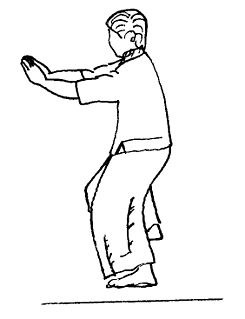 W
WMin zin is an internal system of exercise and energy-healing from Myanmar. It can be used to defend against threats that are physical, mental or spiritual in nature.
 W
WMurāqabah is Sufi meditation. Through murāqabah a person watches over their (spiritual) heart and gains insight into the heart's relation with its creator and its own surroundings. Murāqabah is a core concept in commonly found ṭarīqas. The objective of murāqabah is to purge one's base characters and develop lofty character in its place.
 W
WYogi Naraharinath was a Nepalese historian, writer and saint of Nath tradition of Gorakhnath. He has written over 600 books in 28 different languages and has performed 129 Koti Homs throughout Nepal.
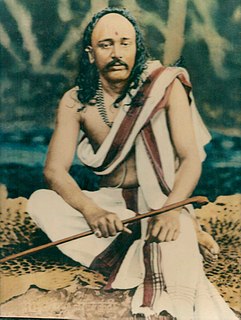 W
WPant Maharaj, born Dattatreya Ramchandra Kulkarni, was a Hindu yogi and guru in the Belgavi region of India and is regarded by his devotees as a saint and an incarnation of Dattatreya.
 W
WAbhay Charanaravinda Bhaktivedanta Swami or Srila Prabhupada, born Abhay Charan De, was an Indian spiritual teacher and the founder-acharya (preceptor) of the International Society for Krishna Consciousness (ISKCON), commonly known as the "Hare Krishna Movement". Members of the ISKCON movement view Bhaktivedanta Swami as a representative and messenger of Krishna Chaitanya.
 W
WPrayer is an invocation or act that seeks to activate a rapport with an object of worship through deliberate communication. In the narrow sense, the term refers to an act of supplication or intercession directed towards a deity, or a deified ancestor. More generally, prayer can also have the purpose of thanksgiving or praise, and in comparative religion is closely associated with more abstract forms of meditation and with charms or spells.
 W
WSri Ramakrishna Paramahamsa, born Gadadhar Chattopadhyaya, was an Indian Hindu mystic, saint, and religious leader in 19th century Bengal. Sri Ramakrishna experienced spiritual ecstasies from a young age, and was influenced by several religious traditions, including devotion toward the Goddess Kali, Tantra, Bhakti and Advaita Vedanta.
 W
WSādhanā, literally means "methodical discipline to attain desired knowledge or goal", Sadhana is also done for attaining detachment from worldly things which can be a goal of a Sadhu, Karma Yoga can also be described as Sadhana, so also Bhakti Yoga & Gnyan Yoga, constant efforts to achieve maximum level of perfection in all streams in day-to-day life can be described as Sadhana. is a generic term coming from the yogic tradition and it refers to any spiritual exercise that is aimed at progressing the sādhaka towards the very ultimate expression of his or her life in this reality. It includes a variety of disciplines in Hindu, Buddhist, Jain and Sikh traditions that are followed in order to achieve various spiritual or ritual objectives.
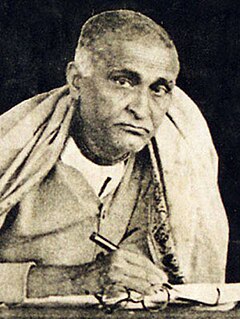 W
WBhaktisiddhanta Sarasvati, born Bimla Prasad Datt, was a Gaudīya Vaisnava Hindu guru, ācārya, and revivalist in early 20th century eastern India. To his followers, he was known as (Srila) Prabhupāda.
 W
WShamanism is a religious practice that involves a practitioner, a shaman, who is believed to interact with a spirit world through altered states of consciousness, such as trance. The goal of this is usually to direct these spirits or spiritual energies into the physical world, for healing or some other purpose.
 W
WThe Shattariyya are members of a Sufi mystical tariqah that originated in Persia in the fifteenth century C.E. and developed, completed and codified in India. Later secondary branches were taken to Hejaz and Indonesia. The word Shattar, which means "lightning-quick", "speed", "rapidity", or "fast-goer" shows a system of spiritual practices that lead to a state of "completion", but the name derives from its founder, Sheikh Sirajuddin Abdullah Shattar.
 W
WSai Baba of Shirdi, also known as Shirdi Sai Baba, was an Indian spiritual master who is regarded by his devotees to be a manifestation of Sri Dattaguru and identified as a saint and a fakir. He was revered by both his Hindu and Muslim devotees during, as well as after his lifetime.
 W
WSmudging generally refers to the practice of burning herbal material. It can be done for practical reasons or for spiritual or ceremonial purposes.
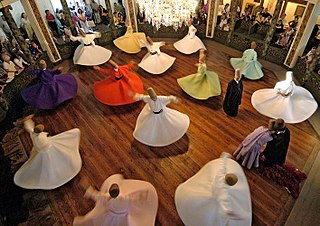 W
WSufi whirling is a form of physically active meditation which originated among certain Sufi groups, and which is still practiced by the Sufi Dervishes of the Mevlevi order and other orders such as the Rifa'i-Marufi. It is a customary meditation practice performed within the Sema, or worship ceremony, through which dervishes aim to reach the source of all perfection, or karma. This is sought through abandoning one's nafs, ego or personal desires, by listening to the music, focusing on God, and spinning one's body in repetitive circles, which has been seen as a symbolic imitation of planets in the Solar System orbiting the sun.
 W
WTantra denotes the esoteric traditions of Hinduism and Buddhism that developed in India from the middle of the 1st millennium CE onwards. The term tantra, in the Indian traditions, also means any systematic broadly applicable "text, theory, system, method, instrument, technique or practice". A key feature of these traditions is the use of mantras, and thus they are commonly referred to as Mantramārga in Hinduism or Mantrayāna and Guhyamantra in Buddhism.
 W
WVishuddhananda Paramahansa popularly known as Gandha Baba was a Hindu yogi and saint. By the early 1900s, he had developed yogic powers such as the materalization of objects and scents, and became socially popular for his feats. His encounter with Paramhansa Yogananda, during the latter's youth, is detailed in Yogananda's autobiography.
 W
WSwami Vivekananda, born Narendranath Datta, was an Indian Hindu monk. He was a chief disciple of the 19th-century Indian mystic Ramakrishna. He was a key figure in the introduction of the Indian philosophies of Vedanta and Yoga to the Western world, and is credited with raising interfaith awareness, bringing Hinduism to the status of a major world religion during the late 19th century. He was a major force in the revival of Hinduism in India, and contributed to the concept of Indian nationalism as a tool to fight against the British empire in colonial India. Vivekananda founded the Ramakrishna Math and the Ramakrishna Mission. He is perhaps best known for his speech which began with the words "Sisters and brothers of America ...," in which he introduced Hinduism at the Parliament of the World's Religions in Chicago in 1893.
 W
WYoga is a group of physical, mental, and spiritual practices or disciplines which originated in ancient India. Yoga is one of the six Āstika (orthodox) schools of Hindu philosophical traditions.
 W
WParamahansa Yogananda was an Indian monk, yogi and guru who introduced millions to the teachings of meditation and Kriya Yoga through his organization Self-Realization Fellowship (SRF) / Yogoda Satsanga Society (YSS) of India, and who lived his last 32 years in America. A chief disciple of the Bengali yoga guru Swami Sri Yukteswar Giri, he was sent by his lineage to spread the teachings of yoga to the West, to prove the unity between Eastern and Western religions and to preach a balance between Western material growth and Indian spirituality. His long-standing influence in the American yoga movement, and especially the yoga culture of Los Angeles, led him to be considered by yoga experts as the "Father of Yoga in the West."